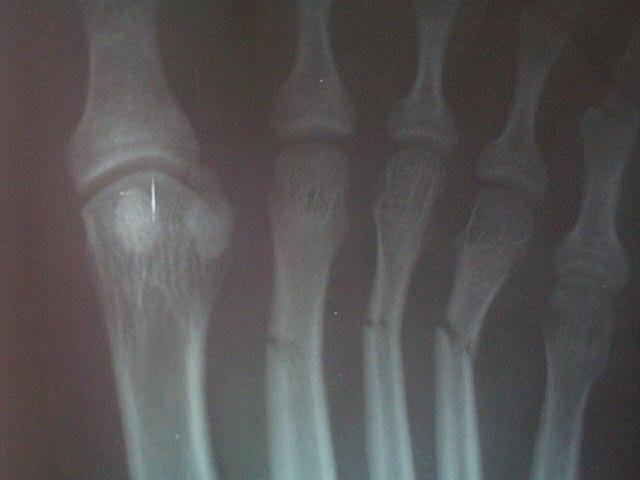
March Fractures
Source: Wheeless' Textbook of Orthopedics
Synopsis
A stress fracture of the metatarsals
is known as a March fracture, because it was first described as a condition
amongst army recruits, marching with heavy loads. The condition usually arises
as a result of unaccustomed loading of the bone, eg a sudden increase in
exercise intensity. It is particularly common in adolescents, and middle-aged
runners.
The 2nd or 3rd metatarsals are the most susceptible to this injury, which
results in pain in the forefoot, aggravated by impact. The onset is sudden
(unlike metatarsalgia, which usually builds up gradually), and the foot will be
swollen over the fracture site. It is very often more painful on the dorsum
(top) of the foot.

Treatment
Treatment is often conservative in
approach: rest from weight-bearing for 4-6 weeks. Mild cases may require an
orthotic device placed into the shoe for support. Moderate cases require
plaster-cast or the equivalent. Advice on the return to training is essential,
since it is often poor training regimes which are the origin of this problem.